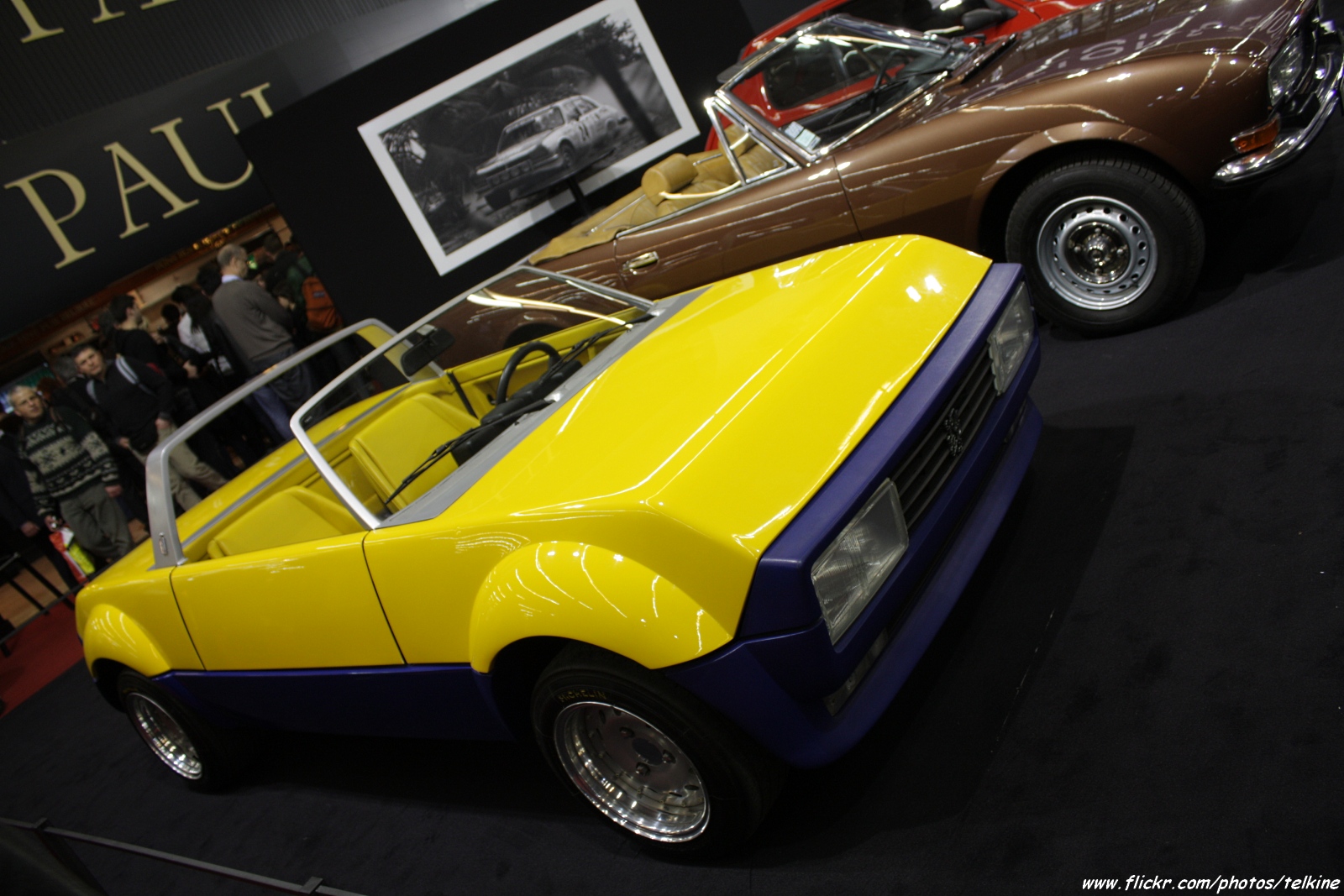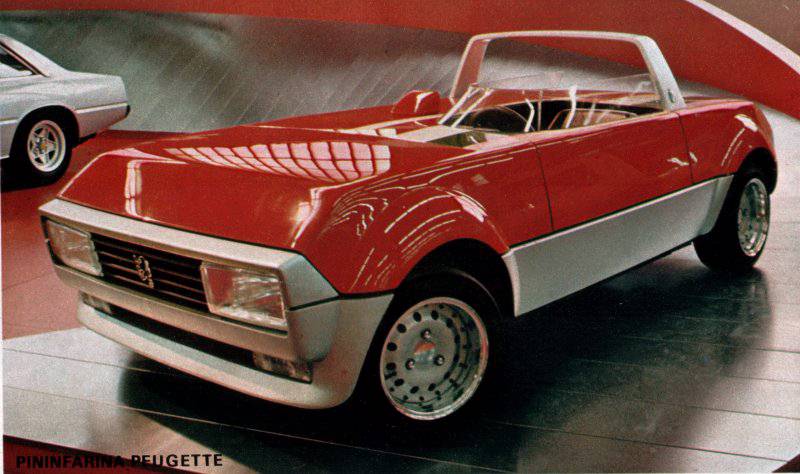Despite the name (which means 'Small Peugeot') and use of Peugeot mechanicals, the Peugette concept car was not a Peugeot factory effort. It was actually a 1976 Pininfarina design study built with hopes of generating interest from Peugeot (with whom Pininfarina had a good relationship with at the time).
Under its unique body, the Peugette was mechanically identical to the '76 Peugeot 104ZS.

The 104 was an economical small hatchback, but certainly not a bad car (by early-’70s European standards). Upon its introduction in 1972, reviewers praised it for it's handling, ride and slick-shifting gearbox. It sold well and remained popular well into the ’80s. For a utilitarian hatchback, the three-door ZS version had reasonably legit sporting pretensions.


Unusuallly for Pininfarina, the Peugette was designed with manufacturing efficiency as a top priority. The idea was that the Peugette would be a stylish, satisfying car accessible to European youth whose motoring dreams outstripped their economic resources. It was a “lifestyle" vehicle before that awful marketing phrase came into being.
The Peugette’s remarkable, even bizarre appearance was a result of its dual purpose to be both dramatic and cheap. The body panels are all symmetrical, left to right and front to back. Thus, the front and rear bonnet and wings are interchangeable, as are the doors. Same was true of the dashboard’s modular instrument “pods.” This was intended to cut down on the parts that needed to be developed and manufactured for initial assembly, as well as stocked at dealers for accident repairs.



Light weight, low power cars of course don’t tax their underpinnings as much as larger, vehicles do, and therefore don’t need extremely sophisticated chassis components to shine; Lotus for example have demonstrated this for decades. The Peugette did receive some strategic chassis bracing - most notably, a roll bar made from thick flat stock with an accompanying lower crossbeam welded in behind the cockpit. This reportedly only made up for the Peugette’s loss of body rigidity over the 104ZS, bringing it back to par while adding some rollover protection, rather than noticeably increasing stiffness over the donor car. Thanks to the Peugette’s wider rims and tyres and lighter weight than the 104ZS, contemporary road tests said the Peugette was wickedly fun to drive in urban situations and tight back roads, where its meagre power output didn’t spoil the party.
Unfortunately, those road tests didn’t generate much more that passing interest from the motoring public after the Peugette’s 1976 unveiling. So Pininfarina revamped the project a year later, and showed it again with the addition of a Barchetta version that replaced the full windscreen with a passenger-side hard tonneau and a small racing windscreen that wrapped around the monoposto driver’s seat.
Despite some interest, Peugeot eventually decided that selling an utterly impractical car to people who had no money was not a great marketing strategy... The couple of Peugettes built found their way into European car museums where they remain today.
Here at Amazo Towers, we're amazed that this did not make it into production; when it's principle competition in the UK would have been the MG Midget and Triumph Spitfire and maybe the FIAT X/19 and Alfa Spider in Europe (both larger cars), you don't need a slide rule and compass to deduce the car could have been a hit.
| Click on the image to read article |






No comments:
Post a Comment